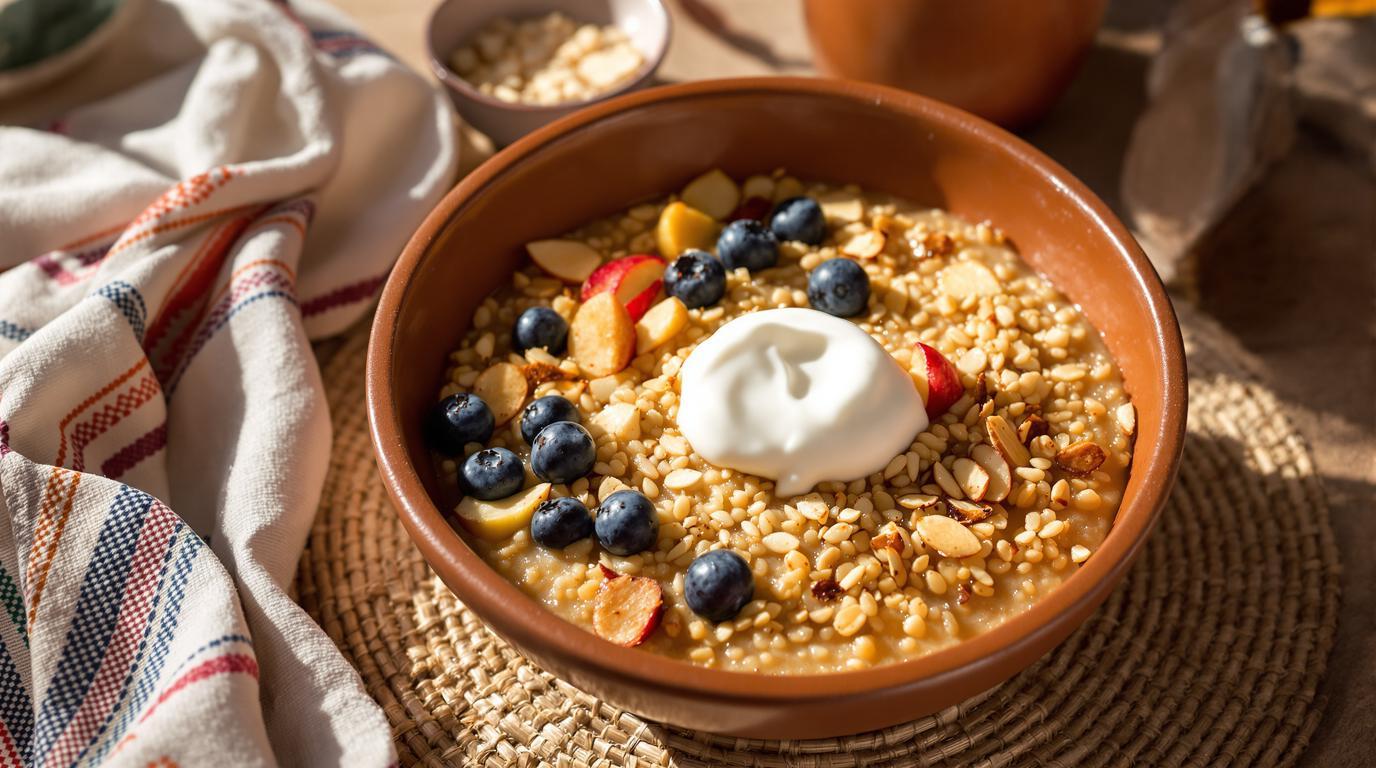There’s something deeply comforting about starting the day with a warm bowl of porridge—especially when it breaks from the ordinary. The quinoa breakfast porridge I’m sharing today is inspired by my time in Peru, where I first discovered how the ancient grain quinoa could transform morning routines. While traditional Andean cuisines use quinoa primarily in savory applications, this breakfast adaptation marries old-world nutrition with modern breakfast sensibilities. The first time I tasted it, overlooking the misty mountains near Cusco, I knew I had to bring this protein-packed start to kitchens back home.
The Story Behind Quinoa Breakfast Porridge 📖
Quinoa has been cultivated in the Andean highlands for over 5,000 years, considered sacred by the Incas who called it “the mother grain.” What many don’t realize is that quinoa isn’t actually a grain at all, but a seed related to spinach and beets! This explains its remarkable protein content and why it forms the perfect foundation for a hearty breakfast. During my culinary travels through South America, I noticed how traditional ingredients were being reimagined for contemporary palates—this porridge being a perfect example of heritage meeting innovation.
What makes this particular recipe special is how it balances quinoa’s earthy profile with the familiar comfort of oats. The result? A breakfast that feels simultaneously novel and nostalgic, like something your grandmother might have made if she’d had access to ingredients from around the world. Speaking of grandmothers, if you enjoy comfort food with simple preparation, you might also love Grandma’s 10-Minute Creamy Corn Bowl—another dish that delivers homestyle satisfaction with minimal fuss.
Essential Ingredients 🧾
For two generous servings, you’ll need:
- ⅓ cup quinoa, rinsed and soaked overnight (75g)
- ⅓ cup rolled oats (30g)
- 2 cups water or almond milk (480ml)
- 1 pinch sea salt
- 1 pinch cinnamon
- 1 teaspoon vanilla extract (optional)
- Fresh or frozen berries for topping
- Nuts, seeds, or honey for serving
The overnight soaking of quinoa isn’t just tradition—it serves a critical purpose by removing the naturally occurring saponins that can lend bitterness. If you’re short on time, thoroughly rinse the quinoa in warm water instead, though the texture won’t be quite as perfect.
Step-by-Step Instructions 📝
- Drain and rinse your pre-soaked quinoa under cool water until it runs clear.
- In a heavy-bottomed pot, combine the quinoa, oats, water (or almond milk), salt, and cinnamon.
- Bring to a gentle boil over medium heat, then reduce to a simmer.
- Cover with the lid slightly ajar to prevent boiling over and simmer for 25 minutes.
- Stir every 5 minutes to prevent sticking, but avoid over-stirring which can make the texture gummy.
- The porridge is done when the quinoa’s spiral-like germ has released and the mixture has thickened.
- If using vanilla extract, stir it in now, off the heat.
Chef’s Note: The ideal texture should be creamy but with each grain still distinct—similar to a perfectly cooked risotto. If it’s too thick, add a splash more liquid; if too thin, simmer uncovered for a few extra minutes.
Chef’s Secret Techniques 🤫
The real magic of this porridge comes from understanding quinoa’s unique properties. Unlike typical breakfast grains, quinoa maintains a slight al dente quality even when fully cooked—embrace this textural contrast rather than trying to cook it into submission. If you prefer a creamier finish similar to this one-pan Caprese chicken pasta, add an extra tablespoon of oats.
For a flavor boost, try toasting the dry quinoa in the pot for 2-3 minutes before adding liquid—this develops a nutty depth that elevates the entire dish. And if you’re serving guests, consider preparing a quick honey-balsamic drizzle to finish the porridge with sophisticated sweetness.
Serving & Presentation Tips 🍽️
In Peru, breakfast grains are often served in handmade clay vessels that keep the contents warm. At home, I replicate this by pre-warming ceramic bowls with hot water before serving. The traditional presentation includes a colorful array of toppings arranged in sections around the porridge—berries, sliced banana, chopped nuts, and perhaps a dollop of yogurt.
For a protein-rich accompaniment, consider pairing with this Mediterranean tuna and bean salad, especially if serving as a heartier brunch. If you’re feeling adventurous, finish with caramelized pineapple inspired by this Brazilian grilled pineapple recipe—the tropical sweetness perfectly complements quinoa’s earthiness.
The most important thing to remember about this humble breakfast is that it connects you to culinary traditions spanning millennia and continents. As you enjoy each spoonful, you’re participating in an ancient ritual reimagined for modern kitchens—nourishing not just your body with complete proteins and fiber, but also your connection to the rhythms of traditional cooking that have sustained generations.
